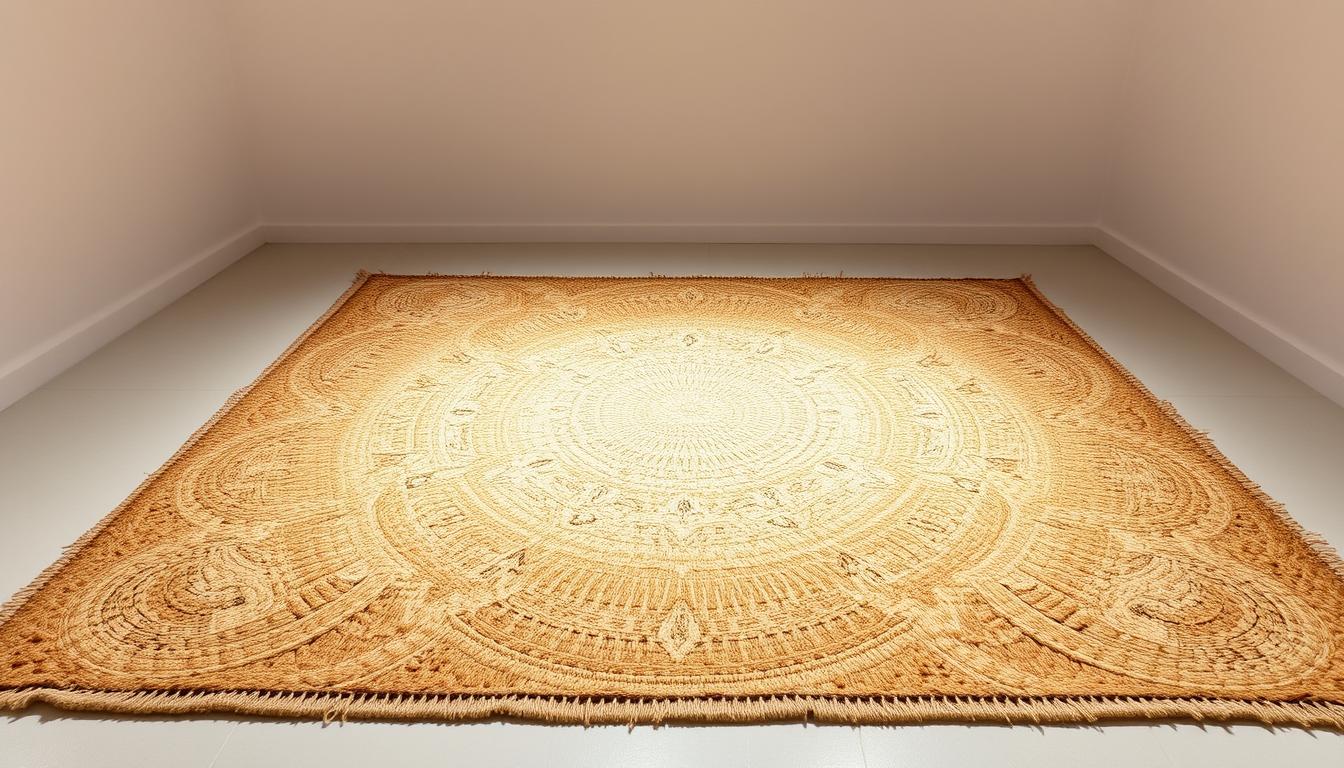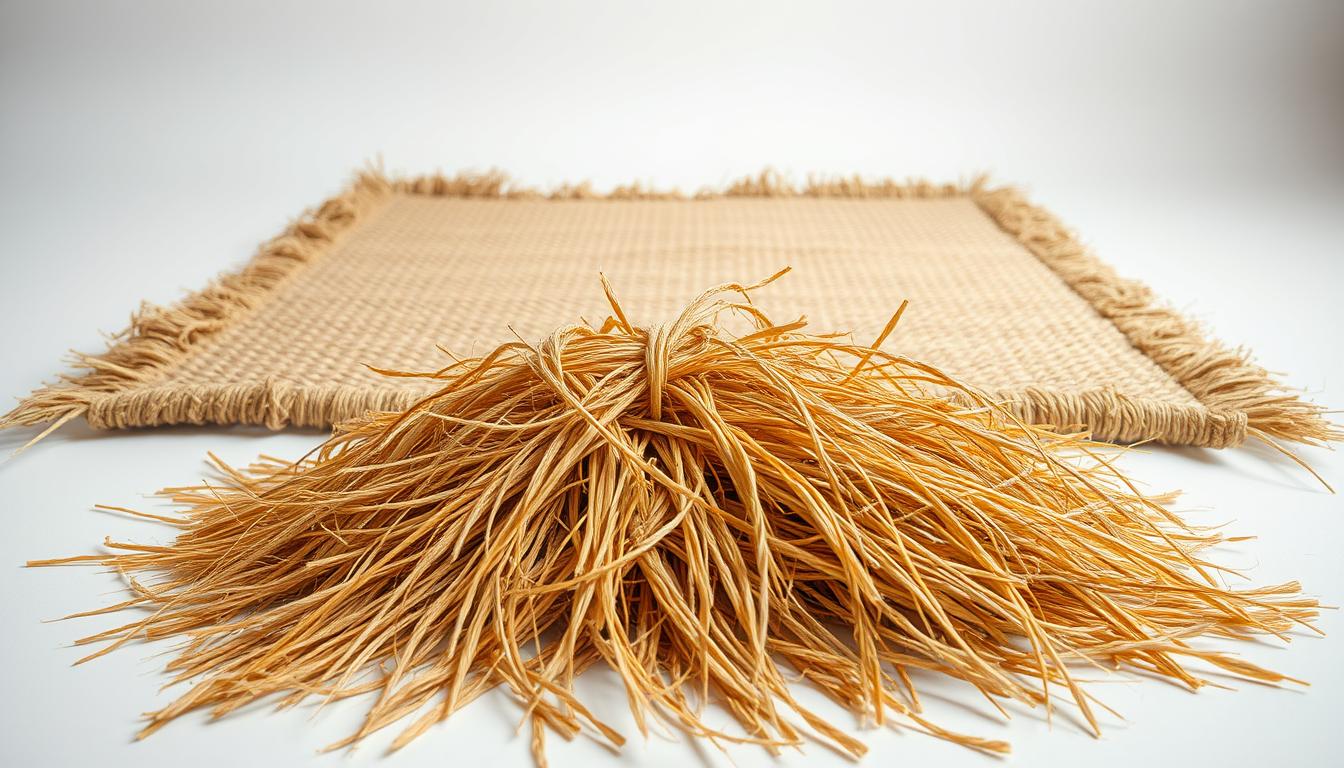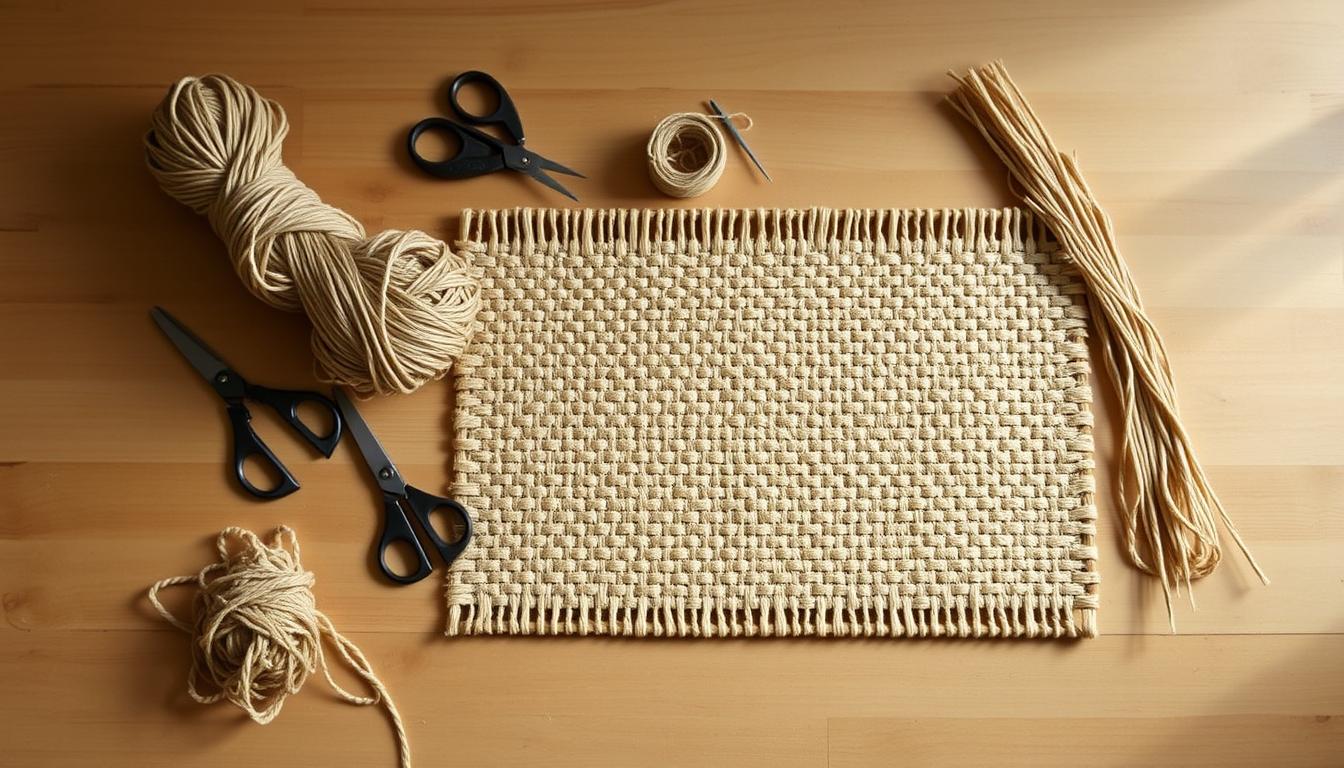
5 Natural DIY Steps for a Sisal Rug
Imagine transforming any room with a durable, earth-friendly floor covering that matches your style perfectly. Natural fiber rugs made from agave plants offer surprising strength—some withstand 300% more wear than synthetic options. But can you really create one yourself without expert skills?

This guide reveals five simple steps to craft a timeless piece using renewable materials. You'll learn adaptable techniques, from spiral coiling to basic knotting, that work for any area in your home. The process takes just hours, yet yields results rivaling store-bought alternatives costing three times more.
Why choose this material? Natural fiber rugs from agave plants biodegrade completely and require 60% less energy to produce than plastics. Their dense weave resists stains and lasts through decades of foot traffic. Best of all, you control every detail—size, pattern, and edge finishes that reflect your personal aesthetic.
Key Takeaways
- Customizable designs fit any room layout or decor style
- Plant-based fibers outlast synthetic blends by 3x
- Two beginner-friendly construction methods explained
- Essential tools and safety tips for smooth crafting
- Professional finishing techniques for polished edges
Materials & Tools for Your DIY Sisal Rug
Gathering the right supplies makes crafting natural fiber floor coverings efficient and enjoyable. Start with 2-3 rolls of plant-based cord from your nearest hardware store—enough to handle medium size projects. Measure your space first to avoid mid-project shortages.

Essential Sisal and Basic Supplies
Choose thick, tightly twisted fibers for durability. Pair them with an oversized crochet hook (size Q/16mm works best) that won’t snap under tension. You’ll also need:
- Strong adhesive like E6000 for spiral designs
- Fabric backing cut from old sheets or rubber mats
- Sharp scissors and measuring tape
Crochet Hooks, Gloves, and Tape for Finger Protection
Working with natural fibers requires skin safeguards. Wrap medical tape around fingertips or wear snug gloves to prevent irritation. Keep painter’s tape nearby to secure edges during assembly.
For patterned accents, grab chalk paint in neutral tones from brands like Annie Sloan. A foam roller helps apply colors evenly without bleeding. Total costs stay under $25—far less than pre-made store versions.
Step-by-Step Instructions for Building Your diy Sisal rug
Crafting a durable floor piece becomes straightforward when following these organized methods. Choose between crochet precision or spiral simplicity based on your preferred texture and time investment.
Foundation Setup and Initial Stitches
Begin with a 24-inch chain for standard throw dimensions. Create a slip knot on your hook, then pull plant fiber through to form loops. Work single crochet stitches by inserting the hook into the second chain, wrapping material, and completing two pulls per stitch.
Building Consistent Texture
Turn your work after each row using one chain stitch. Slide the hook under front loops only to create raised ridges that enhance grip. Maintain even tension to prevent curling edges—this ensures flat surfaces ideal for high-traffic zones.
Final Edge Enhancements
Complete your design with slip stitches around the perimeter for clean lines. For spiral creations, secure outer coils with extra adhesive while rotating the piece. Trim excess fibers flush against the backing using sharp scissors.
Alternate method: Roll rope sections in 6-inch increments, pressing glued areas firmly. Larger pieces allow faster progress—attach 12-inch segments once you pass the 18-inch diameter mark. Rotate the project frequently to check symmetry as you expand outward.
Custom Design and Finishing Tips for Sisal Rugs
Personalizing your natural fiber floor covering transforms it from functional to extraordinary. With simple techniques, you can elevate plain materials into designer-worthy centerpieces that reflect your unique style.

Stenciling Techniques for Visual Impact
Start by marking borders with 1" painter's tape, measuring 8 inches from every edge. This creates uniform spacing for framing patterns. For corner accents, mask 8" squares and apply custom green paint using Annie Sloan’s chalk formula.
Mix colors using equal parts French Linen and Old White with water. This blend penetrates the natural weave without clumping. Use foam rollers in circular motions to push pigments deep into fibers.
- Grande Harlequin Stencil: Creates diamond motifs matching the material’s texture
- Sicilia Tile Stencil: Adds Mediterranean-inspired corner details
- Gota Embroidery Border: Produces floral edges with vintage charm
Let each layer dry completely before adding adjacent designs. For stripes, align tape parallel to the sides and alternate colors. Finish with 3/4" white borders around painted squares using angled brushes.
These methods let you create custom pieces fitting any space – from compact entryways to sprawling living areas. The finished size becomes secondary to the artistic statement you’ve crafted.
Conclusion
Your handmade creation stands as a blend of artistry and resilience. By mastering these methods, you’ve crafted a floor piece that withstands daily wear while elevating your room’s character. Natural fibers like sisal gain charm over years, developing a rich patina that store-bought options can’t replicate.
These techniques adapt effortlessly to other spaces. Create matching border accents for hallways or experiment with larger formats for open areas. Explore natural fiber benefits further to enhance future projects with eco-friendly durability.
The cost savings let you design multiple pieces without compromising quality. Pair your rug with versatile home accents for layered textures in living rooms or entryways. Each step ensures lasting functionality and visual harmony throughout every room.
Every time you walk across your finished piece, you’ll appreciate the skill invested. Natural materials age gracefully, ensuring your work remains a focal point for decades.
FAQ
What materials are essential for creating a natural fiber floor covering?
You’ll need sisal rope or yarn, a sturdy crochet hook, fabric glue, and protective gloves. For added safety, use painter’s tape to shield your fingers while working with tight weaves.
How do you prevent uneven edges during the weaving process?
Maintain consistent tension while looping each row. Start with a precise chain length and use a measuring tape to check alignment as you progress. Adjustments early on ensure a uniform shape.
Can you add color accents to a neutral-toned design?
Yes! Use fabric-safe dyes or colored threads to introduce stripes or geometric patterns. Test a small section first to confirm colorfastness and compatibility with the natural fibers.
What’s the best way to secure a decorative border?
After completing the main weave, wrap matching or contrasting material around the perimeter. Secure it with tight stitches or fabric glue, ensuring corners are reinforced for durability.
How long does it take to craft a medium-sized piece for a living area?
Depending on complexity, expect 15–25 hours. Larger sizes or intricate patterns like herringbone or diamonds will require more time. Work in stages to avoid hand fatigue.
Where can you source high-quality materials for this project?
Retailers like Home Depot, Michaels, or specialty craft stores carry sisal supplies. Online brands such as Aunt Lydia’s or Bernat offer durable options for custom designs.









